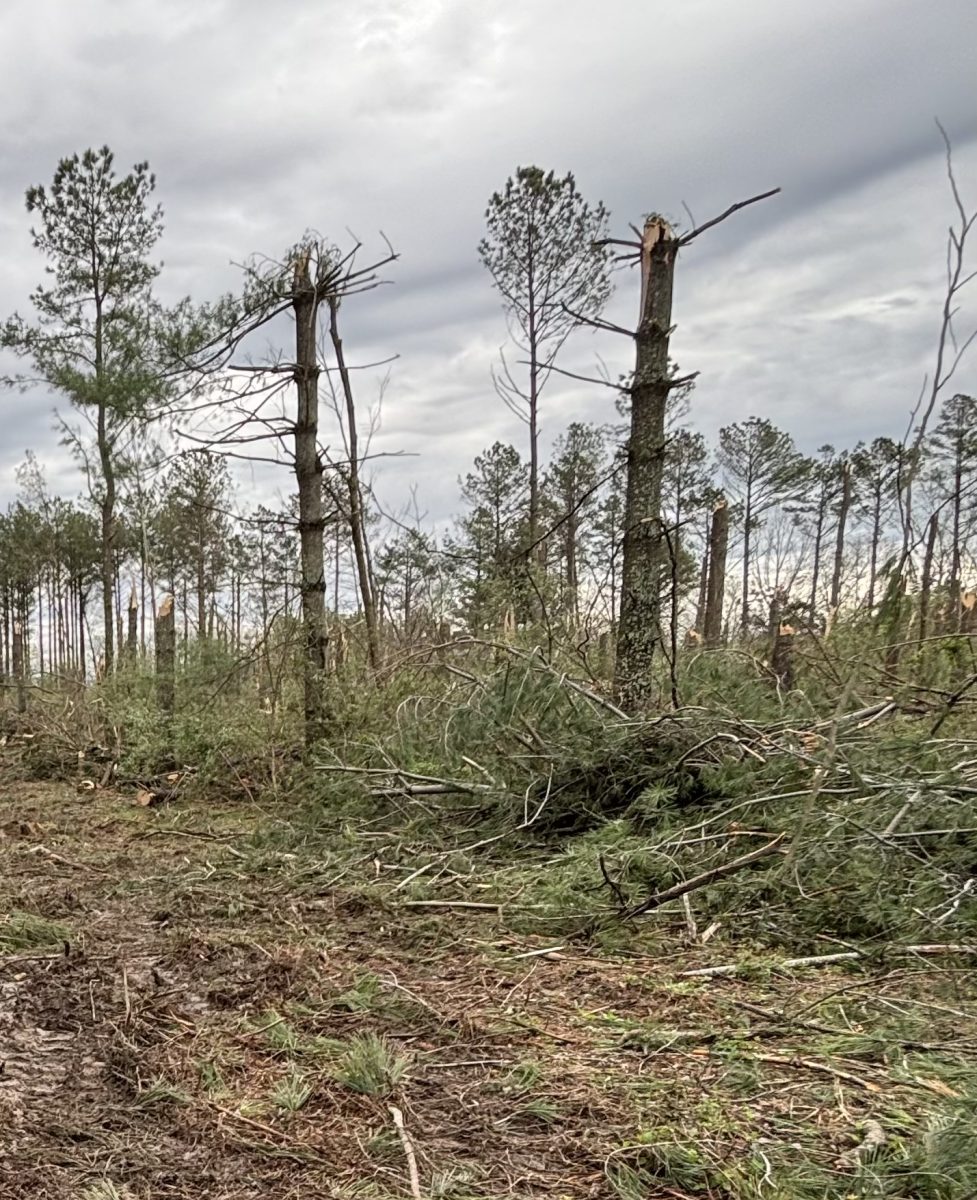University suffers $5 million in storm damage
May 19, 2009
Administrators estimate the university suffered $5 million worth of damage during a May 8 storm that wreaked havoc across the region.
SIUC spokesman Rod Sievers said the majority of damage should be covered by the university’s self-insurance. Officials were in the early stages Tuesday of working with commercial insurance carriers and adjusters, according to a university release.
Of the $5 million worth of damage, $1 million is from the cost of debris cleanup, the release said. A majority of the cost comes from building damage, Sievers said.
Advertisement
‘Every building roof was impacted in some way, but none of the buildings were severely damaged,’ he said. ‘We are still cutting away some debris and finding damage that was not even apparent from the outside.’
Phil Gatton, director of Plant and Service Operations, estimated the storm destroyed roughly 1,000 trees on campus alone. The three phases of cleanup include ensuring safety, cleaning the central core of campus and then cleaning Campus Lake, Thompson Woods and other outlying areas, he said.
Among campus buildings, the Agriculture Building appears to have been hit the worst. According to the release, the building suffered $300,000 worth of damages.
Other examples of building damage includes $170,000 worth of damage to Thompson Point, $115,000 to McAndrew Stadium, $100,000 to Quigley Hall, $100,000 to Grinnell Hall and $50,000 to the East campus chiller building.
The university, Sievers said, will then collectively submit its Federal Emergency Management Agency request along with the City of Carbondale and the other counties affected.
Gov. Pat Quinn declared Jackson County one of six disaster areas in southern Illinois and has also sought federal relief for the area, which is the first step in procuring FEMA funds. But Quinn’s request could take months to reach the federal level. President Barack Obama would have to declare the area a federal disaster area before federal funds could be allocated.
Chancellor Sam Goldman said the campus likely wouldn’t return to normal for at least a few months but hopes emergency crews could clear the debris in time for the fall semester.
Advertisement*
‘So much work has to be done to (get the campus) back into shape,’ Goldman said. ‘We really hope it will be done in the summer months before the fall begins, but we will see.’
The university is self-insured – meaning a majority, if not all, of the $5 million worth of damage will be backed by the university’s coverage, Sievers said.
Goldman said some areas of campus are still off limits, including Thompson Woods, Campus Lake and the area between the lake and the Stone Center.
But for the most part, the campus is fully functional.
‘Given the devastation that we had with respect to trees snapping and building damage, the campus is in fine shape,’ Goldman said.
The storm, which canceled several colleges’ graduation commencements, featured winds more than 100 miles per hour and destroyed thousands of trees and power lines.
Popularly billed an inland hurricane, the National Weather Service in Paducah, Ky., identified the storm as a derecho, which is defined on its Web site as a widespread and long-lived windstorm associated with a band of rapidly moving showers or thunderstorms.
The Department of Public Safety’s telecommunications center received 1,300 calls on the day of the storm, according to a release. The university also delivered more than 165,000 text messages through the WENS text-messaging system, which kept students and staff up to date with storm news and updates.
University Housing also opened its doors to provide more than 6,600 meals and bottled water to emergency crews, and students and staff.
As many as 150,000 Ameren customers were without power, including more than 68,000 in the southern Illinois area.
Roughly 450 emergency workers are also being housed in Neely Hall.
Advertisement








